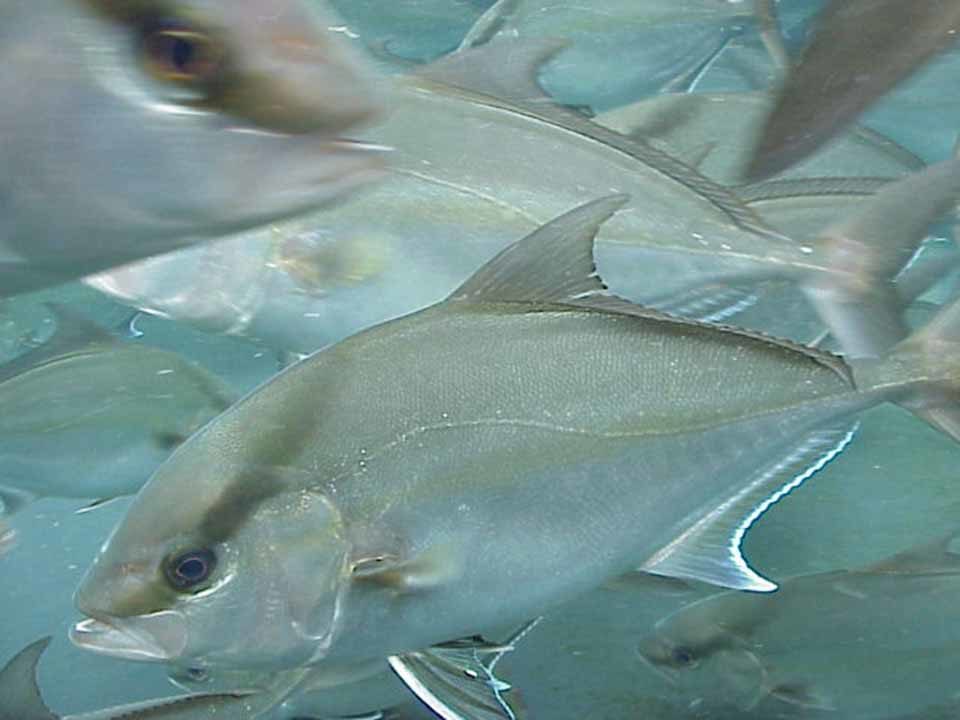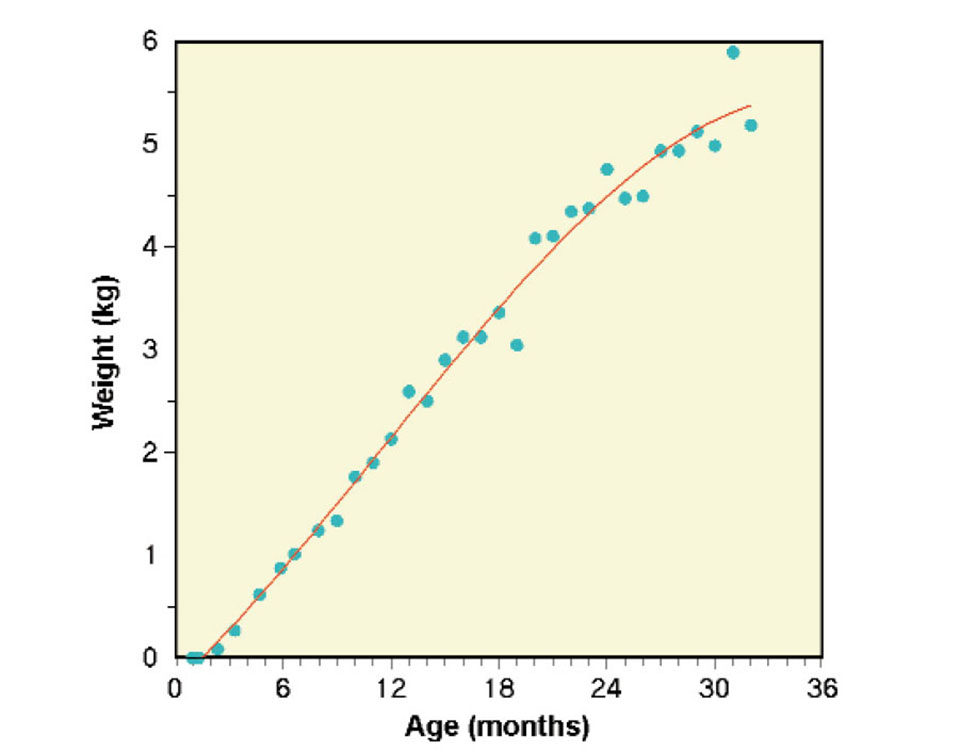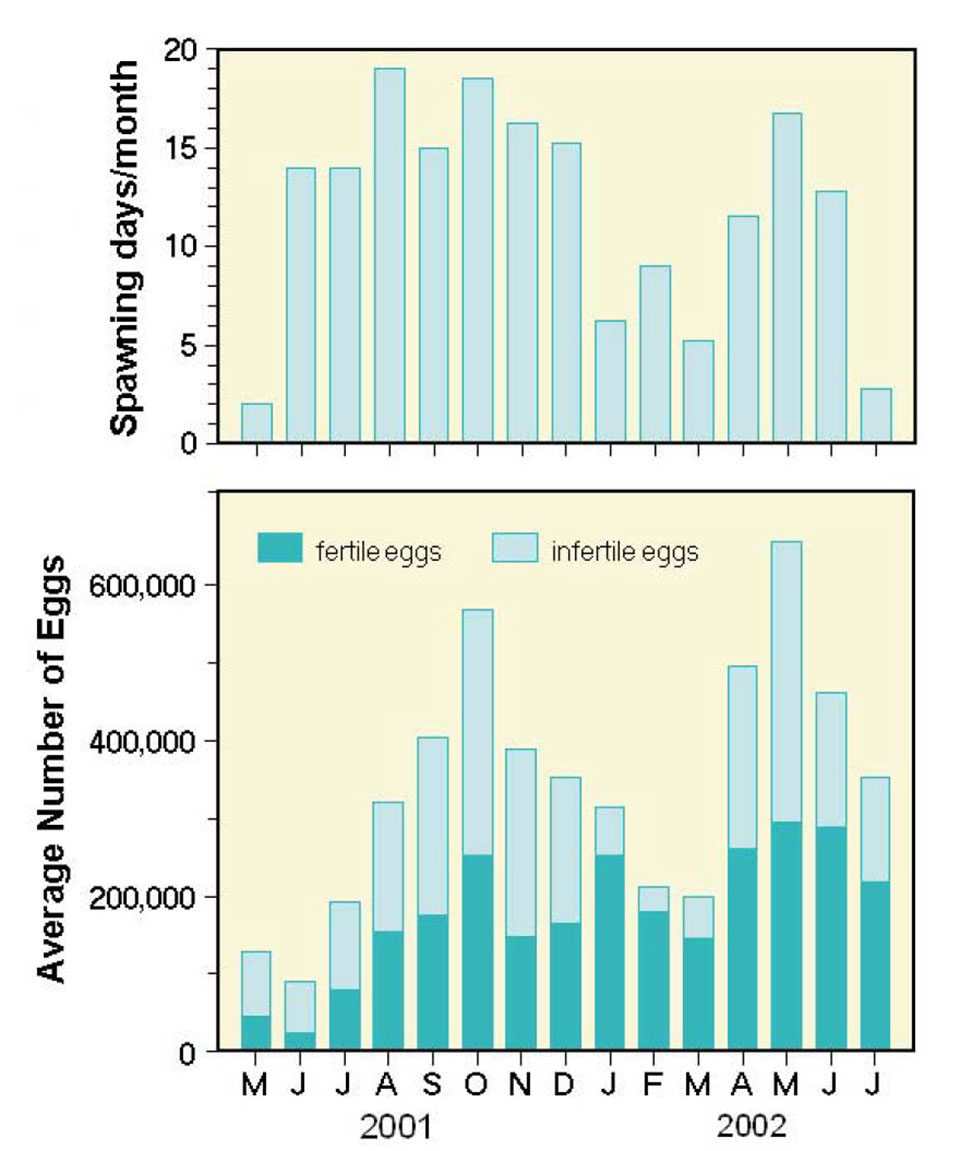Longfin amberjack, or kahala, best suited to captivity

Amberjacks (Seriola sp.) have excellent aquaculture potential due to their adaptability to conditions of intensive culture, extremely fast growth, and high market value. Substantial commercial production already exists for yellowtail (Seriola quinqueradiata) and greater amberjack (Seriola dumerili) in Japan. The southern kingfish (Seriola lalandi) is raised in Australia. Seriolid culture is also being developed in the Mediterranean and Latin America.
However, a combination of difficulties in establishing reliable egg supply and commercially viable hatchery technologies has generally limited commercial amberjack production to the grow-out of wild-collected fingerlings. Even in Japan, where the industry is most developed, fingerling supplies continue to limit production and lead to large yearly shifts in market price.
Hatchery technology
With grant assistance from the National Oceanic and Atmospheric Administration and state of Hawaii, USA, the Oceanic Institute (O.I.) began working on hatchery technology for amberjack culture in the mid-1990s. It achieved natural spawns of wild-collected adults of both the greater amberjack and longfin or Almaco jack (Seriola rivoliana). Although both species have spawned at O.I., the longfin amberjack known locally as kahala has been much more adaptable to captivity. It is emerging as a prime candidate for the emerging offshore farming sector in Hawaii.
The natural spawning of wild-caught amberjacks in 1999 was a significant achievement that enabled the production of several thousand juveniles using intensive hatchery rearing techniques at O.I. The resulting F1 progeny were grown to maturation in 25-cubic-meter outdoor grow-out tanks using a commercial pelleted marine grower diet. The fish demonstrated excellent growth rates, achieving mean body weights of over 2 kg in the first year and near 5 kg at two years of age (Fig. 1).

Although maintaining actively spawning stocks of wild-collected amberjacks has proven difficult due to the species’ susceptibility to a number of parasitic and bacterial pathogens, the successful closing of the life cycle has allowed the use of domesticated F1 and F2 stocks as broodstock.
Domesticated broodstock
In captivity, male amberjack began maturing within the first year and actively spermiated at 21 to 22 months of age. Female amberjack mature slightly slower than males, with a rapid increase in gonadosomatic index and near-simultaneous onset of spawning at 24 months of age.
Under ambient photoperiod and temperature in Hawaii, F1 broodstock have spawned for over two years without interruption. They exhibit some seasonality in reproductive output, but remain in reproductive condition throughout the year (Fig. 2). Tanks containing 20 adults have yielded an average of 13 spawns per month with mean fecundity of 154,000 eggs per spawn and mean a fertility rate of 43 percent. Spawn size and fertility rates have both increased over time, indicating the value of long-term broodstock holding.

In 2003, O.I. achieved spawning of the F2 populations at just under 2 years of age, indicating the ability of this species to be fully domesticated. Ongoing research at O.I. is directed at increasing stock biosecurity and improving fingerling production technologies to secure reliable year-round fingerling supplies at commercial scales of operation.

Offshore cage production
Pilot-scale production in offshore cages was initiated in January 2004. Several thousand amberjack fingerlings were stocked into a submersible offshore cage operated by Cates International to begin evaluating the performance of this species in the offshore environment.
(Editor’s Note: This article was originally published in the February 2004 print edition of the Global Aquaculture Advocate.)
Now that you've finished reading the article ...
… we hope you’ll consider supporting our mission to document the evolution of the global aquaculture industry and share our vast network of contributors’ expansive knowledge every week.
By becoming a Global Seafood Alliance member, you’re ensuring that all of the pre-competitive work we do through member benefits, resources and events can continue. Individual membership costs just $50 a year. GSA individual and corporate members receive complimentary access to a series of GOAL virtual events beginning in April. Join now.
Not a GSA member? Join us.
Authors
-
Charles W. Laidley, Ph.D.
The Oceanic Institute
Makapuu Point
41-202 Kalanianaole Highway
Waimanalo, Hawaii 96795 USA -
Robin J. Shields, Ph.D.
The Oceanic Institute
Makapuu Point
41-202 Kalanianaole Highway
Waimanalo, Hawaii 96795 USA -
Anthony C. Ostrowski, Ph.D.
The Oceanic Institute
Makapuu Point
41-202 Kalanianaole Highway
Waimanalo, Hawaii 96795 USA
Related Posts

Health & Welfare
Bivalent vaccine protects yellowtails, amberjack against pasteurellosis
The authors developed an efficacious combination vaccine against P. piscicida and L. garvieae for yellowtail and amberjack. Field trials showed positive results, and the vaccine was approved for use in Japan.

Health & Welfare
Novel soy proteins, oils replace fishmeal to achieve FIFO under 1:1 in amberjack
In a nutrition trial, longfin amberjack received two diets composed of 40 percent soy protein concentrate and 10 percent fishmeal, and a control diet with 20 percent fishmeal.

Responsibility
How aquaculture furthers the Blue Growth Initiative
Blue Growth is as an integral part of sustainable global development and the Food and Agriculture Organization's Sustainable Development Goals as they relate to conservation of marine resources.

Health & Welfare
Marine fish culture in Mexico
Mexico has a wide diversity of areas and water temperatures that are suitable for a variety of aquaculture species.


